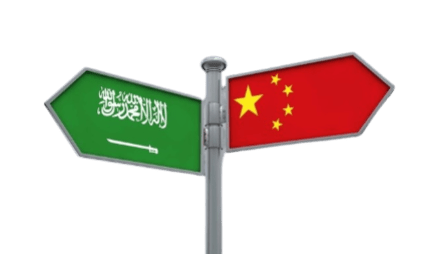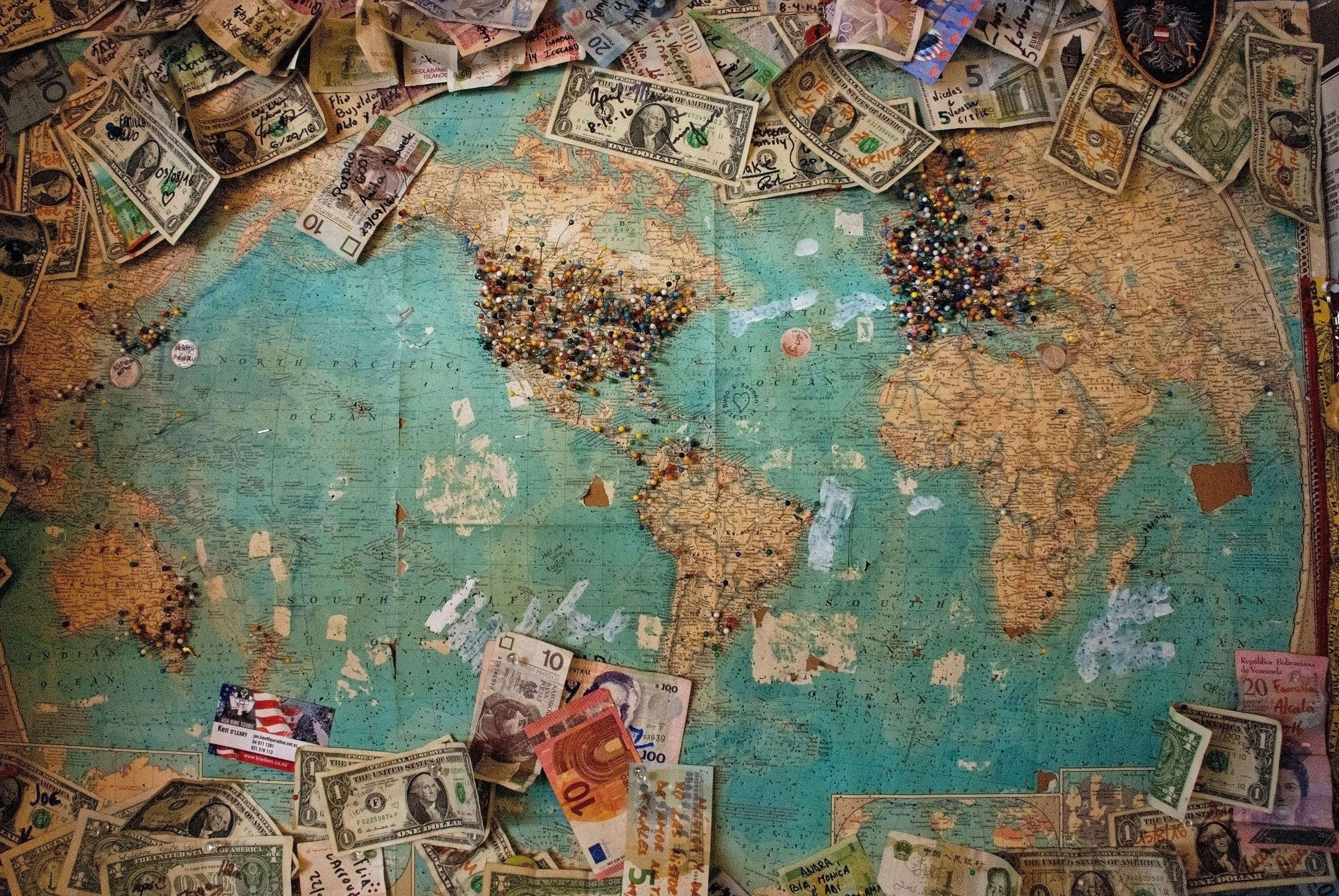- 27 November 2023
- No Comment
- 818
Reshaping World Order – The Rise of De-dollarization and Revolution of Currency Swap Agreements

Ever wondered how countries swap currencies—not with magic but with agreements? Since the financial crisis of 2007, also known as “The Great Recession,” central banks around the world have entered into a multitude of bilateral Currency Swap Agreements with one another.
But first, let’s decode the key points. We’ll begin by understanding exactly what currency swap agreements (CSA) entail. Then, we’ll take a detour into the growing trend of de-dollarization and explore the motivations behind countries seeking alternatives to the almighty U.S. dollar.
Lastly, we’ll discuss the implications of currency swap agreements for de-dollarization, including the reduced dependence on the greenback and the potential challenges and risks that lie ahead. Lastly, unfold the recently concluded 50 billion yuan or 26 billion riyals (7 billion USD) 30th currency swap agreement by China with the Kingdom of Saudi Arabia.
Hi, I’m Nabeel Shaikh, a seasoned chartered accountant with 17 years of diversified experience. Let’s unlock the secrets behind currency swap agreements (CSA) and unveil the hidden forces driving the shift away from the dollar-dominated world order.
Understanding Currency Swap Agreements
Picture this: Two countries, let’s call them Country A and Country B, decide to have a little financial rendezvous. They agree to exchange their respective currencies for a set period, usually at a predetermined exchange rate. This is what we call a currency swap agreement (CSA).
How Currency Swap Agreements Work
CSAs are like magical portals that allow the parties involved to access each other’s currencies without actually having to buy or sell them on the open market. It’s like a secret handshake between central banks, ensuring smooth liquidity when needed.
Benefits of Currency Swap Agreements
CSA brings with it a plethora of advantages. Firstly, they provide a lifeline for countries facing currency volatility or liquidity shortages. It’s like having a financial fairy godmother who can magically stabilize your currency. Additionally, these agreements have the power to enhance trade between nations. By eliminating the need for constant currency conversions, businesses can focus on what they do best: making money.
But there’s more! CSA can also foster stronger diplomatic ties between countries. After all, who doesn’t like a good old-fashioned economic partnership?
It’s like a mutually beneficial friendship but with added financial perks.
Now that we have deciphered the secrecy surrounding currency swap agreements, let’s move on to our next part—the growing trend of de-dollarization.
The Growing Trend of De-dollarization
The Growing Trend of De-dollarization, the fancy way of saying, “Hey, let’s not rely solely on the US dollar anymore!” It’s like giving the greenback a gentle nudge and saying, “You’re not the only fish in the sea.”
So, what exactly is this de-dollarization trend all about? Let’s dive in and explore.
What is de-dollarization?
De-dollarization is the process of reducing reliance on the US dollar in international transactions. It’s like going on a shopping spree and deciding to diversify your wardrobe because you don’t want to be seen wearing the same outfit every day.
The same goes for countries; they don’t want to be too dependent on one currency. Countries are embracing de-dollarization. And who’s leading the de-dollarization parade?
Russia and China!
They’re like the power couple of the financial world, tagging each other in practically every move they make. These countries have been making a conscious effort to promote the use of their own currencies in international trade, bucking the trend of using the US dollar as the go-to medium of exchange
Motivations Behind De-dollarization
Why are countries embracing de-dollarization? Well, think about it this way. Imagine you lent money to someone who constantly told you what to do, how to do it, and when to do it. Pretty annoying, right? That’s how countries feel about the US dollar.
They want more control over their own financial destiny. Plus, there’s always the fear of economic sanctions from the US, which makes de-dollarization a tempting alternative.
But let’s not forget about the big elephant in the room—trust issues.
Countries may not always see eye to eye with the US on political matters, and relying too heavily on the dollar means putting their fate in the hands of Uncle Sam.
So, de-dollarization provides a shield against any potential economic vulnerabilities and ensures greater autonomy. In a nutshell, de-dollarization is about countries diversifying their financial relationships and reducing their reliance on one dominant currency.
It’s like exploring different cuisines instead of eating pizza every day, no matter how delicious it is. So, there you have it, the growing trend of de-dollarization. It’s a movement led by countries like Russia and China, driven by the desire for financial autonomy and protection against economic vulnerabilities.
Let’s see where this journey takes us and how it shapes the dynamics of the global financial landscape. Exciting times ahead; let’s keep an eye on this trend as it unfolds, like BRICS nations.
The BRICS nations—Brazil, Russia, India, China, and South Africa—have been at the forefront of the de-dollarization movement.
Brazil has implemented policies to diversify its foreign reserves, reducing its reliance on the US dollar. Russia, amidst geopolitical tensions, has actively sought alternatives for international trade settlements, including the use of national currencies.
India and China have engaged in bilateral agreements promoting trade in their own currencies, reducing dependency on the US dollar. South Africa has explored similar strategies to safeguard its economic interests.
Formed in 2010, it encompasses over 40% of the world’s population and a quarter of the global economy. These nations are actively reducing their reliance on the U.S. dollar through strategic initiatives.
Before the inclusion of its new members (Argentina, Egypt, Ethiopia, Iran, Saudi Arabia, and the UAE), BRICS collectively held a GDP of $27.7 trillion, representing a 26% share of the global GDP. The addition of these new members contributes an additional $3.1 trillion to the bloc, with Saudi Arabia leading the pack with a GDP of $1.1 trillion.
Even with these new additions, BRICS still trails behind the G7, which holds a 43% share of global GDP. However, this gap is expected to narrow as major BRICS nations, particularly India, continue to experience above-average growth rates.
Additionally, the possibility of more countries joining the BRICS in the future could further impact the group’s standing on the global economic stage
BRICS: Key strategies include:
The New Development Bank (NDB)
Established in 2014, the NDB finances infrastructure projects in local currencies, surpassing $33 billion in approved loans.
BRICS Contingent Reserve Arrangement (CRA)
Launched in 2015, this framework provides liquidity support with an initial size of $100 billion, reducing dependence on the IMF.
BRICS Payment System
Set to be operational by 2024, this system facilitates cross-border payments and settlements, reducing transaction costs and risks associated with the U.S. dollar.
BRICS Joint Statistical Publication and Basket Reserve Currency
The publication enhances data comparability, while the proposed reserve currency, based on weighted exchange rates, is under discussion.
Beyond the BRICS, countries like Iran, Turkey, Venezuela, and Zimbabwe are also de-dollarizing due to U.S. sanctions and hyperinflation. Regional organizations like ASEAN, EAEU, and AfCFTA are promoting local currencies for intra-regional trade and integration.
India and Japan also signed a US $75 billion currency swap agreement in 2018, which was renewed in 2022, allowing both countries to exchange their local currencies for US dollars.
This global trend is reshaping financial landscapes, with diverse strategies driving the shift away from the dominance of the U.S. dollar.
Implications of Currency Swap Agreements for De-dollarization
Implications of Currency Swap Agreements for De-dollarization Currency swap agreements have been hailed as an effective tool to promote de-dollarization and reduce dependence on the US dollar.
With an emphasis on reducing reliance on the dollar-dominated global financial system, currency swap agreements have far-reaching implications.
Reduced Dependence on the US Dollar
One of the key implications of currency swap agreements is a significant reduction in dependence on the US dollar. As more countries engage in these agreements, they are able to conduct bilateral trade and investment without relying on the greenback as an intermediary currency.
This allows nations to bypass the risks associated with a volatile dollar, such as fluctuations in exchange rates and the impact of US monetary policy decisions on their own economies.
Strengthening International Trade
Currency swap agreements also strengthen international trade by facilitating smoother cross-border transactions. As countries swap currencies, they eliminate the need for third-party conversion and associated transaction costs.
This increases efficiency and enhances trade volumes between participating nations. It’s like a secret shortcut that allows you to beat traffic and reach your destination faster, while everyone else is stuck in a never-ending traffic jam.
However, it’s not all sunshine and rainbows when it comes to the implications of currency swap agreements for de-dollarization. There are challenges and risks that need to be addressed.
Challenges and Risks
One of the main challenges is the complexity of implementing and managing these agreements. Negotiating favorable terms, ensuring compliance with regulatory frameworks, and monitoring liquidity risks are all crucial aspects of making sure that currency swap agreements deliver the desired results.
It’s like trying to juggle multiple balls in the air while riding a unicycle; it requires skill, precision, and the ability to adapt to unexpected changes.
Another risk is the potential for currency devaluation. If one of the participating currencies undergoes a sudden depreciation, it can create instability and impact the efficacy of the currency swap agreement.
It’s like signing up for a fancy gym membership only to realize that you’ve strained your muscles after just a few sessions – not exactly what you had in mind when you started.
These agreements have the potential to significantly impact de-dollarization efforts. By reducing dependence on the US dollar and strengthening international trade, these agreements offer a new way forward in the global financial landscape.
However, challenges and risks must be carefully considered and managed to ensure the success of such agreements. It’s like embarking on a thrilling adventure; there may be exhilarating moments, but it also requires careful navigation to reach the desired destination.
What are the potential impacts of de-dollarization on the US economy?
From 1999 to 2019, the dollar was the star of the show, taking the lead in 96% of international trade transactions in the Americas, 74% in Asia, and 79% around the rest of the globe, according to the Federal Reserve.
That’s not all—the greenback was the go-to choice for banks globally, featuring in about 60% of their non-domestic deposits and loans. And here’s the kicker—in today’s foreign exchange market, the U.S. dollar is throwing its weight around, showing up on one side of nearly 90% of all transactions.
In 2022 and 2023, the once-stable world of currencies got a shake-up, sparking a quest for alternatives to the dollar.
The catalyst? U.S. sanctions on Russia, raising eyebrows globally about the U.S.’s power to freeze funds over diplomatic disputes.
Result? The U.S. dollar’s hold on foreign exchange reserves hit a record low at 58%, with gold, the OG international currency, gaining ground at 15%, up from 11% in the last five years.
Inflation has thrown a wrench into the dollar’s international standing. The U.S.’s historically low inflation rates took a U-turn, casting doubts on the dollar’s stability for long-term savings and investments.
Early 2023 brought a regional banking crisis. Big names like Silvergate, Silicon Valley Bank, Signature, and First Republic took a hit, leading the U.S. Treasury and Federal Reserve to step in with unprecedented guarantees to contain the chaos.
Not your usual scenario for the financial capital of the world, right? It’s a wild ride for the dollar’s credibility on the global stage.
De-dollarization could have several effects on the US economy, depending on the pace and scope of the process. Some of the possible impacts are:
Less access to capital
If the dollar is no longer the dominant currency, demand for it could decline, which could lead to a decline in its value relative to other currencies. This could make it more expensive for the US to borrow from abroad and to finance its current account deficits and government debt. This could also reduce the availability and attractiveness of foreign capital for the US businesses and consumers
Higher borrowing costs
If the dollar is no longer the dominant currency, the US could lose its privilege of issuing debt in its own currency, which could expose it to the risk of currency mismatches and exchange rate fluctuations. This could increase the uncertainty and volatility of the US debt servicing and repayment. This could also raise the interest rates that the US has to pay to attract foreign investors and creditors
Lower stock market values
If the dollar is no longer the dominant currency, the US could lose its appeal as a safe haven and a destination for foreign investment, especially in times of global turmoil and uncertainty.
This could reduce the demand and prices of US financial assets, such as stocks and bonds. This could also affect the earnings and competitiveness of the US multinational corporations, as they could face lower revenues and higher costs from their overseas operations and transactions.
Let’s dive into the latest and unexpected currency swap agreement between KSA and China. As we’re well aware, Saudi Arabia has been a longstanding ally of the USA for quite some time, and its oil business has been closely tied to the United States. However, recent developments have brought about a surprising twist in the financial landscape.
China and Saudi Arabia Currency Swap Agreement: Trend of Shift Away from Dollars 
The Gulf Cooperation Council (GCC) nations, traditionally tied to the US dollar due to oil transactions, are adapting to the de-dollarization trend.
With an increasing focus on economic diversification, GCC countries are exploring alternative currency arrangements and partnerships. Saudi Arabia, the largest GCC economy, has engaged in currency swap agreements with key trading partners, signaling a strategic move away from exclusive reliance on the US dollar.
The Saudi Central Bank (SAMA) and the People’s Bank of China (PBOC) have signed a three-year currency swap agreement worth a maximum of 50 billion yuan or 26 billion riyals (7 billion USD).
This groundbreaking currency swap between China and Saudi Arabia’s central banks is set to supercharge their trade interactions, now fueled by the yuan and the riyal. It marks a significant stride, challenging the traditional stronghold of the US dollar in the world’s largest oil trade. The stage is set for a new era in international commerce.
This agreement is like a financial safety net that the two countries can use to catch themselves when they fall. It’s a sign of trust between the two nations and of increasing financial cooperation between them.
30th Active Currency Swap Agreement
According to a report released last month, the Chinese central bank already has 29 active currency swap agreements with other countries, topping 4 trillion yuan with countries like Argentina earlier this year.
The pact with SAMA marks the 30th swap inked by the PBOC in the last ten years, showcasing a rapid expansion of the yuan’s global influence.
The Chinese central bank has been on a roll, establishing swap agreements with various Middle Eastern nations, including the United Arab Emirates in 2012, Qatar in 2014, and Egypt in 2016.
The momentum of these agreements highlights China’s strategic push for the yuan’s increased presence on the international stage.
For Saudi Arabia: Vision 2030
CSA isn’t just a financial maneuver; it’s a key player in the Saudi central bank’s strategy to attract investments supporting the ambitious Saudi Vision 2030. This national initiative is geared towards reducing the kingdom’s reliance on fossil fuels and diversifying its economy.
To work together better, the governor invites Chinese banks to do well in Saudi Arabia. They see the importance of foreign investment and using technology for financial inclusion. The recent opening of the Bank of China in Riyadh shows how the two countries are getting closer economically.
The currency swap agreement between China and Saudi Arabia marks a significant milestone in their bilateral economic relationship. It is expected to facilitate trade and investment flows, promote financial cooperation, and reduce reliance on the US dollar.
As both countries continue to expand their economic influence on the global stage, this agreement could have far-reaching implications for the future of the global financial system and geopolitical landscape.
De-dollarization, a new trend of countries shifting away from the US dollar as the dominant global currency, like Russia, China, and even the EU are hopping on this train, mostly to reduce their dependence on the US and exert their own economic power. Motivations vary, but one thing’s for sure, they’re fighting to break free from the greenback’s tight grip.
Also, there are risks and challenges involved, where one wrong move could topple the whole tower. So, caution is advised.




